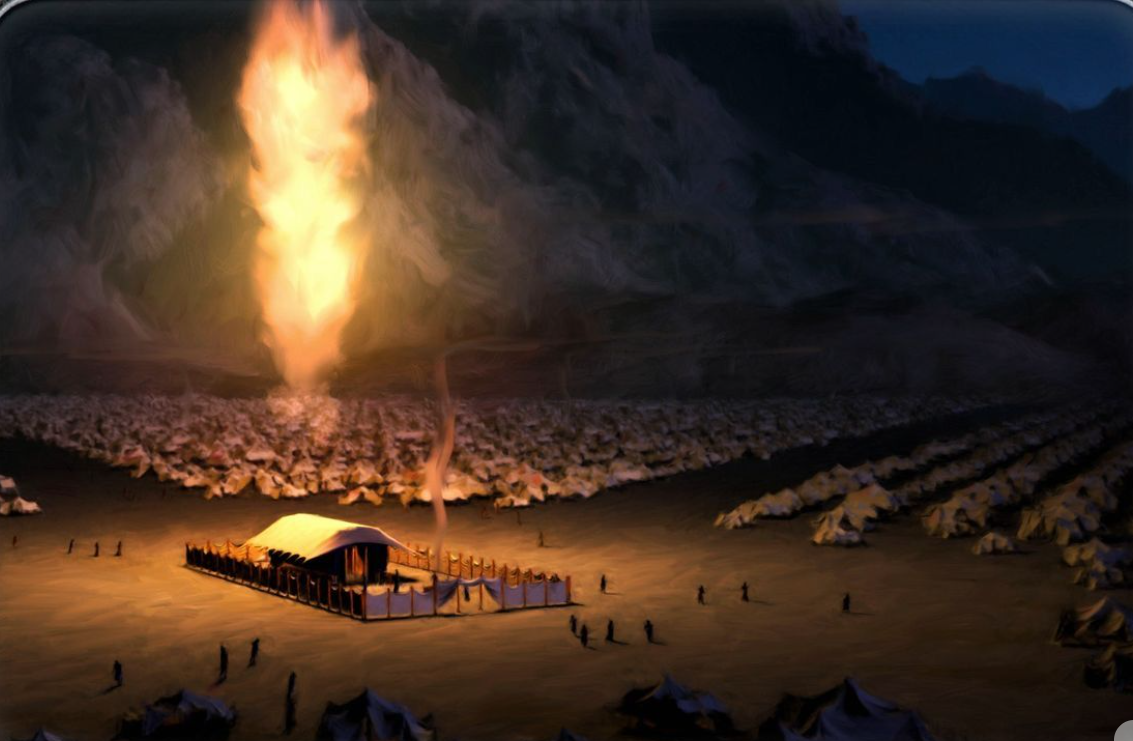Where does God dwell?

This question is as old as Israel itself. The Scripture gives us a rich line of words that circle around the same root — sh-k-n (שכן) — meaning “to dwell, to settle, to abide.” From it we get שְׁכִינָה (Shekhinah), the “indwelling Presence” of God; מִשְׁכָּן (Mishkan), the Tabernacle, literally “the dwelling-place”; and even שָׁכֵן (shakhen), “neighbor,” the one who dwells next to you. There is also לִשְׁכַּב (lishkav), “to lie down,” which shares in this idea of presence, rest and intimacy. All these words together paint a picture of God who does not remain distant, but chooses to dwell, to settle among His people as a neighbor.
Scriptures clarify that “Solomon built the house (בית; bayit) of the Lord in Jerusalem” (1 Chronicles 6:32).
Jesus Himself affirms the same when He says, “Whoever swears by the Temple swears by it and by Him who dwells (katoikéo) in it” (Matthew 23:21).
Hezekiah called the Temple the “dwelling (משׁכן; mishkan) of the Lord” (2 Chronicles 29:6), and Joel spoke of God as the One “dwelling (שׁכן; shokhen) in Zion” (Joel 3:17). The biblical language is consistent: God dwells in His house, His presence abides in His sanctuary.
The whole of Stephan’s proclamation, which includes a quotation from Isaiah, reads, “The Most High does not dwell in [that which is] handmade (χειροποιήτοις; cheiropoiétois), as the prophet says, ‘The skies are my throne, and the land is my footstool. What kind of house will you build for me, declares the Lord, or what is the place of my rest? Have not all these been made by my hand (ἐποίησεν ἡ χείρ μου; epoímsen he cheír mou)?’” (Acts 7:48-50; cf. Isaiah 66:1-2 LXX).
Yes, Solomon may have overseen the building’s construction, but it was really God who built the Temple. This idea aligns with Stephan’s prior recollection that Moses built the tabernacle—the prototype for the Jerusalem Temple—“after the example (τύπος; túpos) he had seen” (Acts 7:44; cf. Exodus 25:40 LXX; Heb 8:5). God does dwell in the Temple, but that holy habitation is made in heaven before its construction on earth.
Is this a contradiction? Did God dwell in the Temple, or not?
The answer, as always, is in the context. Stephen is not saying that God rejected the Temple. Rather, he is reminding his hearers that the Temple itself was not merely a human achievement. It was a divine dwelling, patterned from heaven. God does indeed dwell in His sanctuary — but that sanctuary is first conceived in heaven, then reflected on earth.
So where does God dwell? In the Shekhinah, His radiant presence; in the Mishkan, the earthly reflection of His heavenly dwelling; in the midst of His people, as a shakhen, a neighbor who comes close. And even more: in the mind that open for Him.
The mystery is this: God is both transcendent — “heaven is My throne, earth is My footstool” — and immanent, lying down (lishkav) in the tent of Israel, resting among human lives. The lesson for us today is clear: God’s dwelling is not bound to stone or wood, but to presence. He chooses to dwell wherever He is welcomed. Our lives, our homes, our communities can become His Mishkan, if we allow the Spirit to rest in what is designed according to His patterns.
Perhaps the real question is not where does God dwell? but do we let Him dwell with us?